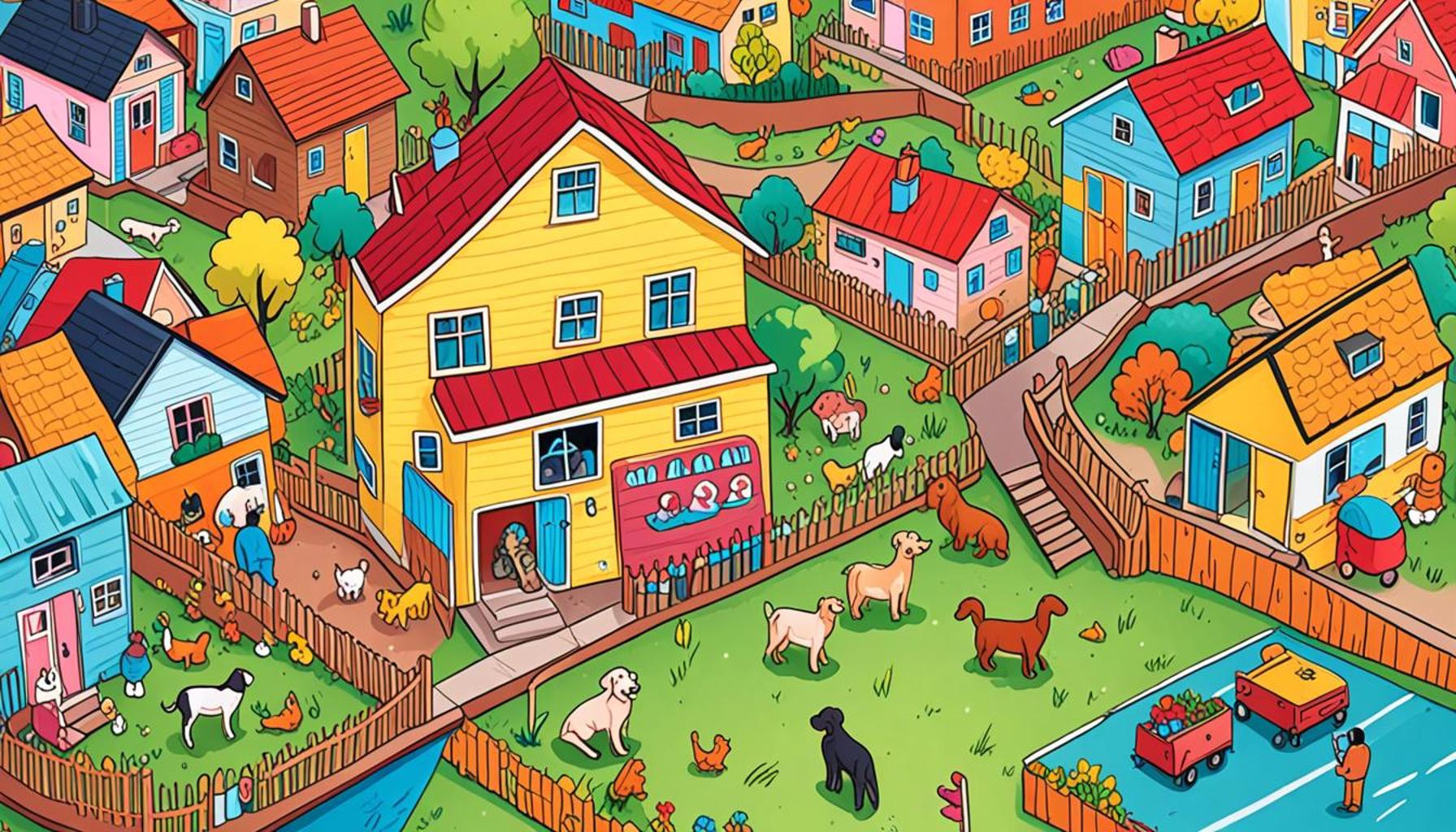The Role of Non-Profit Organizations in Animal Adoption: Impact and Opportunities

The Role of Non-Profit Organizations in Animal Adoption
Across the United States, animal shelters are bursting with pets waiting for a loving home. Non-profit organizations play a critical role in facilitating animal adoption, paving the way for countless animals to find their forever families. These organizations not only promote adoption but also advocate for animal welfare and education within communities. Their dedicated efforts make a tangible difference in the lives of countless animals and their future owners.
Rescue Operations
One of the primary functions of many non-profits is to carry out rescue operations. These organizations often step in to save animals from dire situations, including cases of neglect, abuse, or abandonment. For instance, organizations like the ASPCA frequently intervene in high-profile investigations of puppy mills or hoarding situations where animals are found living in horrific conditions. By providing immediate shelter, medical care, and rehabilitation, these non-profits not only rescue animals but also prepare them for adoption into loving homes.
Community Engagement
Beyond just rescue efforts, non-profits emphasize community engagement. They host various events aimed at raising awareness about the importance of adopting pets rather than purchasing them from breeders or pet stores. Events such as adoption fairs, pet parades, and community festivals help bring potential adopters face-to-face with animals looking for homes. Organizations often collaborate with local businesses to create these community-oriented events, which also serve to build a sense of community around animal welfare. In many major cities, events like “Empty the Shelters” days encourage people to visit shelters and adopt, often at reduced fees.
Education Initiatives
Through education initiatives, non-profit organizations play a vital role in fostering responsible pet ownership. Many groups conduct workshops and outreach programs in schools and community centers to teach individuals about proper pet care, training, and the significance of spaying and neutering pets. For example, programs such as “Paws for Learning” engage young children in hands-on activities that promote empathy and understanding towards animals. Furthermore, by educating potential adopters on the responsibilities of pet ownership, these organizations can help reduce the number of animals returned to shelters after adoption.
In addition to these vital functions, non-profit organizations serve as a bridge between potential pet owners and the animals in need. The sheer number of animals in overpopulated shelters underscores an urgent need for reform and advocacy, presenting opportunities for change and improvement. The commitment of these non-profits illustrates the importance of sheltering and finding homes for these animals while encouraging community members to consider adoption as a humane and fulfilling option.

As we delve deeper into this topic, we will explore the various ways non-profit organizations are shaping the future of animal adoption, driving change, and creating new opportunities for both humans and animals alike. By comprehending their impact, individuals can better understand how they can contribute to the cause and promote a more compassionate society.
LEARN MORE: Click here for essential insights
Animal Welfare Advocacy
Non-profit organizations are at the forefront of animal welfare advocacy, working tirelessly to highlight the plight of abandoned and abused animals. They engage in campaigns that not only raise awareness but also push for legislative changes that protect animal rights. Through partnerships with local governments, these organizations inform the public about the laws that govern animal care and adoption, as well as the penalties for neglect or abuse. Furthermore, advocacy efforts aim to challenge the stigma associated with adopting pets from shelters, promoting the message that a shelter pet can be just as loving and loyal as one bought from a breeder.
Collaborative Efforts
Collaboration is a cornerstone of the work conducted by non-profits in the field of animal adoption. Many organizations partner with other non-profits, local government agencies, and even businesses to create a united front in the fight for animal welfare. For example, several shelters across the country have implemented programs where they transport pets from overcrowded facilities to areas where demand for adoptable animals is higher. This not only increases the animals’ chances of finding a home but also alleviates the burden on the shelters from which they come. Such collaborative efforts demonstrate the power of shared resources and knowledge in maximizing the impact of these organizations.
Mobile Adoption Units
Another innovative approach to enhancing animal adoption rates is the use of mobile adoption units. These traveling shelters bring the animals directly to communities, making it easier for potential adopters to interact with pets in a more casual setting. The units are often equipped with the necessary facilities to showcase animals in a relaxed atmosphere. By providing opportunities for people to meet animals outside of the traditional shelter environment, these initiatives aim to reduce the barriers many face when considering adoption. Mobile units frequently visit events, such as fairs and markets, helping to bridge the gap between potential adopters and shelter animals.
Fostering Programs
Fostering programs represent another significant opportunity facilitated by non-profit organizations. These programs allow animals to stay in temporary homes while waiting for their forever families. By placing animals in foster homes, shelters can reduce overcrowding and provide individualized care, which is often critical for the animals’ mental and physical health. In addition, fostering helps potential adopters get a better sense of a dog’s or cat’s personality and how they interact in a home setting. This arrangement not only benefits the animals but also engages community members by giving them an opportunity to contribute to the adoption effort.
- Rescue operations: Actively saving animals from neglect or abuse.
- Community engagement: Hosting events to raise awareness about adoption.
- Education initiatives: Teaching responsible pet ownership and care.
- Collaborative efforts: Partnering with local agencies to maximize resource use.
- Mobile adoption units: Taking pets directly into communities for a better chance of adoption.
- Fostering programs: Creating temporary homes while animals await adoption.
The multifaceted approaches taken by non-profit organizations reveal the dynamic and evolving landscape of animal adoption. By understanding the various strategies these organizations employ, individuals can see the importance of their initiatives in fostering a culture of compassion and responsibility in pet ownership.
Non-profit organizations play a pivotal role in navigating the complex landscape of animal adoption. By providing shelter, medical care, and rehabilitation for countless animals, these organizations significantly impact their communities. The emotional and financial burdens associated with animal care can be overwhelming, but through innovative fundraising, they have turned these challenges into opportunities for growth and outreach. Many non-profit organizations strive to educate the public about responsible pet ownership and the benefits of adopting over purchasing pets from breeders. They often organize community events that serve both as adoption drives and educational platforms. These events not only highlight the importance of animal welfare but also foster a sense of community, bringing together individuals who share a passion for animal advocacy. Moreover, collaboration with local governments and businesses enhances their outreach and resource capacity. By partnering with veterinary clinics and pet supply stores, non-profits can offer essential services—such as spaying, neutering, and vaccinations—at low or no cost. This not only alleviates overpopulation in shelters but also promotes public health. By addressing the root causes of animal homelessness, such as lack of education and resources, non-profit organizations can help create sustainable solutions.The use of social media in promoting success stories has also reshaped the way non-profits engage with potential adopters. Through platforms like Instagram and Facebook, these organizations share heartwarming tales of animals finding their forever homes, thus inspiring others to consider adoption. This digital engagement is critical in a world where online presence can significantly influence decision-making. Recent studies suggest that as awareness grows, so does the success rate of adoptions. Communities are increasingly recognizing the invaluable contributions of non-profits, yet there remains vast potential for improvement. Continual support, funding, and involvement from the public can elevate their efforts, translating into even more lives saved in a society where every adoption counts. The journey toward better animal welfare is one that requires commitment and collective action—truly a shared opportunity for all. In essence, non-profit organizations are at the forefront of animal adoption efforts, leveraging their unique position to offer innovative solutions and engaging opportunities for communities. Thus, understanding their impact can lead anyone to appreciate the profound difference they make in the lives of both animals and people.
LEARN MORE: Click here to discover the benefits of balanced nutrition for your pet
Innovative Outreach and Fundraising Strategies
Non-profit organizations have had to adapt and innovate in order to continue their vital work in animal adoption. One of the most significant pathways to success is through the implementation of creative outreach and fundraising strategies. These strategies maximize visibility and encourage support from a broader audience. For instance, many organizations harness the power of social media; platforms like Instagram and Facebook are utilized to share heartwarming stories of animals looking for homes, engaging posts about successful adoptions, and urgent calls for donations. This online presence not only raises awareness but also creates a community of supporters who share in the mission of animal welfare.
Success Through Community Events
Community events play a crucial role in strengthening bonds between non-profit organizations and the local population. Activities such as adoption fairs, pet festivals, and educational workshops foster a sense of community involvement while drawing attention to the need for animal adoption. By incorporating fun activities, such as dog shows or training demonstrations, these events provide an entertaining way for potential adopters to interact with animals. Statistics show that organizations that regularly host community events experience a notable increase in adoption rates compared to those that do not. For example, events like “Adopt-a-Dog Month” in October allow organizations to coalesce their efforts and create a sense of urgency around the importance of adoption.
Corporate Partnerships
Partnerships with local businesses have proven to be mutually beneficial for non-profit organizations and companies alike. These collaborations often involve sponsorships for events or donation matching programs, where businesses agree to match the funds raised by non-profits during specific drives. Such initiatives boost financial resources for organizations while enhancing corporate social responsibility efforts. Furthermore, partnerships with pet supply companies can also provide essential resources and supplies, thus reducing operational costs and enhancing care for adoptable animals. By aligning their brands with non-profits, local businesses can attract customers who prioritize humane and community-oriented practices.
Technology-Driven Adoption Solutions
Advancements in technology have also enhanced the animal adoption process. Non-profit organizations are increasingly turning to digital platforms for applications and virtual meet-and-greets, which allow potential adopters to connect with animals from the comfort of their homes. Services like online adoption applications streamline the process and reduce wait times, making it more likely for animals to find homes swiftly. Some organizations have even developed mobile apps that facilitate pet searches and provide updates on targeted animals available for adoption. This integration of technology not only modernizes the adoption experience but also reinforces the importance of connecting people with animal companions efficiently.
Educational Outreach Programs
Educating the public is another pillar of non-profit efforts in promoting animal adoption. Many organizations conduct outreach programs in schools, community centers, and through online webinars, focusing on responsible pet ownership and the importance of spaying/neutering to control the animal population. These programs often feature firsthand stories from adoption success stories, driving home the emotional and practical benefits of adopting. By raising awareness in the community about the realities of animal homelessness and the responsibilities of pet ownership, these programs create informed and dedicated adopters.
The role of non-profit organizations in animal adoption is shaped by a spectrum of innovative strategies and community engagement. These efforts not only facilitate the adoption process but also serve to inspire a cultural shift towards more humane practices in pet ownership and animal welfare.
DIVE DEEPER: Click here to discover more about community organizations for pet adoption
Conclusion: A Vital Link in Animal Welfare
In summary, non-profit organizations play a pivotal role in the landscape of animal adoption, demonstrating significant impact and unveiling myriad opportunities for the future. Through dynamic outreach strategies, community events, innovative partnerships, and technology-driven solutions, these organizations not only facilitate the adoption process but also foster a culture of compassion and responsibility towards animals in need. As the statistics suggest, increased visibility and community involvement can lead to higher adoption rates, underscoring the importance of a collective effort in addressing animal homelessness.
Moreover, the educational outreach programs serve to empower communities by informing the public about the responsibilities of pet ownership and the pressing need for spaying/neutering initiatives. These educative endeavors are essential for cultivating informed adopters who can make lasting commitments to their animal companions. As we move forward, the collaboration between non-profits and local businesses will likely enhance operational capacities while promoting corporate social responsibility initiatives, creating a win-win scenario for both sectors.
To truly harness the potential of non-profit organizations in animal adoption, ongoing support through donations, volunteerism, and advocacy is crucial. The work they do not only changes the lives of individual animals but also helps shape societal views on animal welfare. As such, becoming an advocate, a volunteer, or simply sharing the mission of these organizations can help create a ripple effect that leads to a brighter future for countless animals awaiting loving homes. Explore your local non-profits, participate in community events, and consider an adoption that can transform not just the life of an animal, but also your own.


